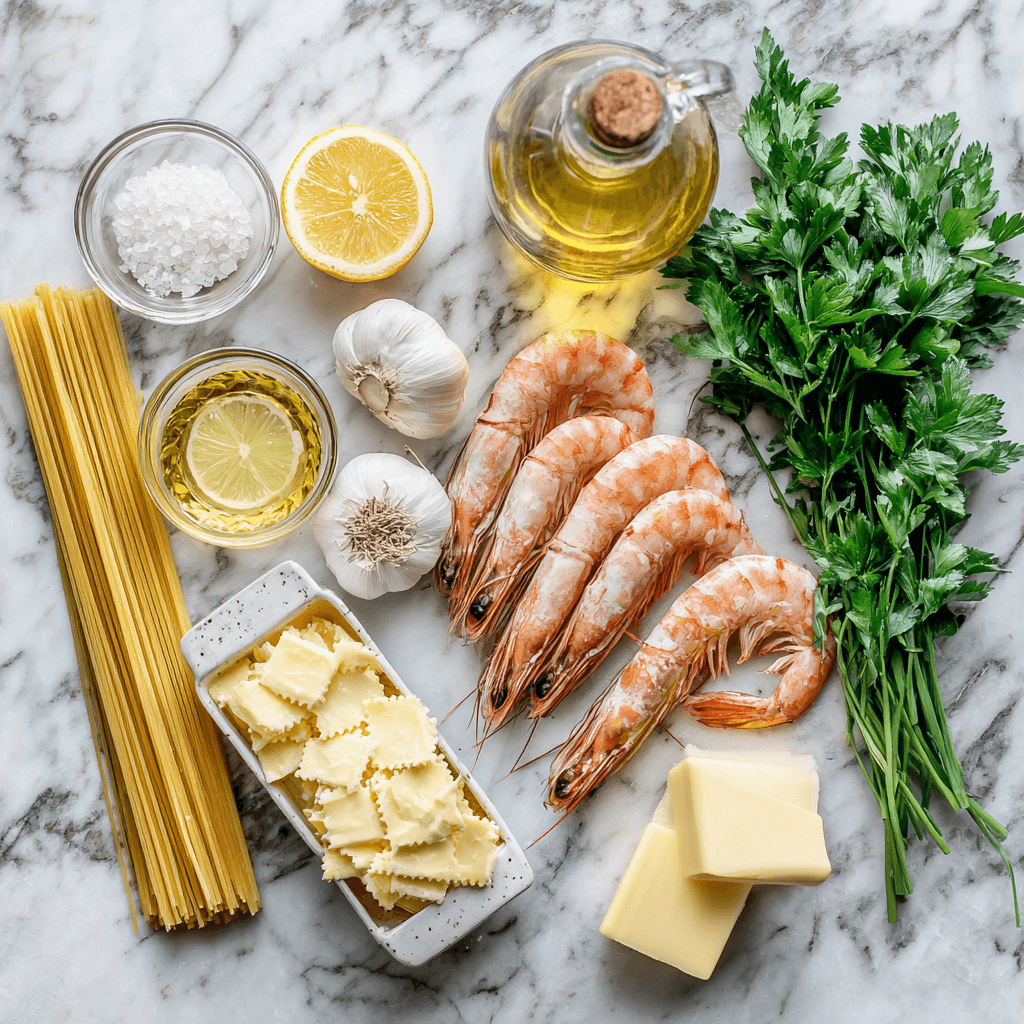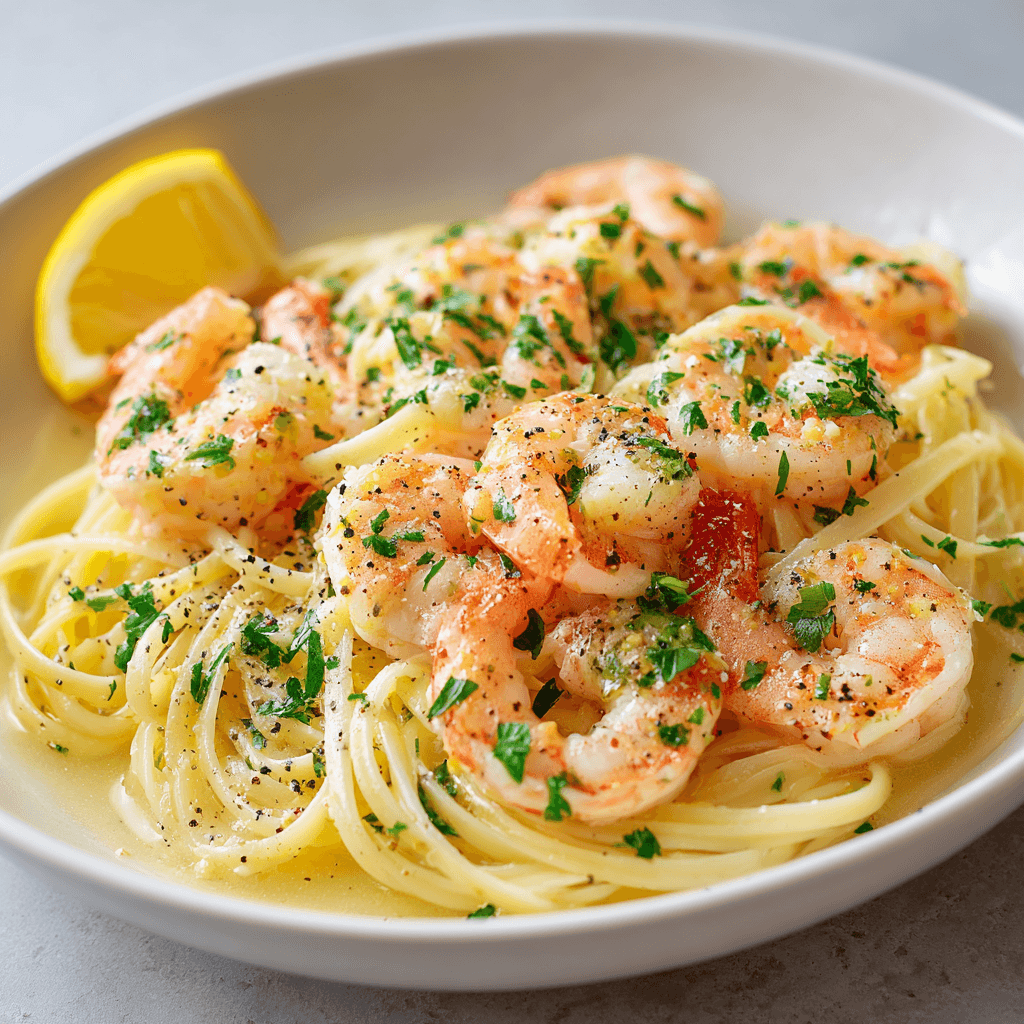I’ll never forget the first time I tried to recreate that perfect shrimp scampi I’d tasted at a high-end Italian restaurant. Picture this: me, a former firefighter who thought he could wing it in the kitchen, standing over a pan of what looked more like rubber bands swimming in greasy butter water. The shrimp were tough, the sauce was broken, and my wife took one bite before diplomatically suggesting we order pizza. That humbling moment taught me that even the simplest-looking dishes require technique, timing, and respect for the ingredients – the same precision I later applied when mastering Gordon Ramsay’s garlic bread. After years of perfecting this Gordon Ramsay-inspired approach, I can now deliver restaurant-quality shrimp scampi that’ll make your guests think you’ve been hiding a culinary degree.
Why This Recipe Works (And Where Most Go Wrong)
The magic of exceptional shrimp scampi lies in three critical principles that most home cooks completely miss. First, it’s all about temperature control – you need that perfect medium-high heat that sears the shrimp without turning them into bouncy erasers. Second, the sauce isn’t just melted butter with garlic thrown in; it’s a proper emulsion that requires pasta water and precise timing. Third, most people commit the cardinal sin of overcooking the shrimp, which happens in literally 90 seconds if you’re not paying attention.
The two biggest failure points I see repeatedly are sauce separation and overcooked shrimp. Sauce separation happens when people dump cold butter into hot garlic oil without gradually building the emulsion – a technique that professional chefs at Serious Eats have perfected through extensive testing. Overcooked shrimp occurs because people don’t realize that shrimp continue cooking even after you remove them from heat – they go from perfectly tender to rubbery in the blink of an eye.
Ingredients That Actually Matter
For the Shrimp:
- 1.5 lbs large shrimp (16-20 count), peeled and deveined
- 2 tablespoons olive oil
- 4 tablespoons unsalted butter
- 6 cloves garlic, minced (not pressed – we want texture)
- 1/2 cup dry white wine (use something you’d actually drink)
- 1/4 cup fresh lemon juice
- 1/4 cup fresh parsley, chopped
- 1/2 teaspoon red pepper flakes
- Salt and black pepper to taste
For the Pasta:
- 1 lb linguine or angel hair pasta
- 1 tablespoon kosher salt (for pasta water)
Let me explain why these specific choices matter. Large shrimp (16-20 count) are essential because smaller shrimp cook too quickly and become tough before you can properly develop the sauce. Use unsalted butter because you need to control the sodium levels – salted butter can make your final dish unbalanced. The white wine should be dry and drinkable; if you wouldn’t sip it, don’t cook with it. As Food Network’s classic preparation guide emphasizes, cheap cooking wine will give your scampi a harsh, acidic bite that ruins the entire dish.

Core Recipe Instructions
Step 1: Prep Your Mise en Place Set up everything before you start cooking. This dish moves fast, and there’s no time to mince garlic while your shrimp are cooking. Pat the shrimp completely dry with paper towels and season with salt and pepper.
Step 2: Start the Pasta Water Bring a large pot of water to a rolling boil with 1 tablespoon kosher salt. The water should taste like mild seawater. Add pasta and cook according to package directions until al dente. CRITICAL WARNING: Reserve 1 cup of pasta water before draining – this starch-rich liquid is your sauce’s best friend.
Step 3: Sear the Shrimp Heat olive oil in a large skillet over medium-high heat until it shimmers. Add shrimp in a single layer – don’t overcrowd. Cook for 1-2 minutes per side until pink and just cooked through. CRITICAL WARNING: Do NOT move the shrimp around while they’re searing. Let them develop that golden crust, then flip once. Remove shrimp to a plate and set aside.
Step 4: Build the Sauce Base In the same skillet, reduce heat to medium. Add 2 tablespoons butter and let it melt. Add minced garlic and red pepper flakes, cooking for 30 seconds until fragrant but not brown. CRITICAL WARNING: Burnt garlic will make your entire dish bitter – if it starts browning, lower the heat immediately.
Step 5: Deglaze and Emulsify Pour in white wine and lemon juice, scraping up any browned bits from the bottom of the pan. Let it simmer for 2 minutes to cook off the alcohol. Gradually whisk in the remaining 2 tablespoons of cold butter, creating a glossy emulsion. If the sauce looks thin, add 2-3 tablespoons of pasta water and whisk vigorously.
Step 6: Bring It Together Return the cooked shrimp to the skillet along with the drained pasta. Toss everything together for 1 minute, adding more pasta water if needed to create a silky sauce that coats the pasta. Remove from heat and stir in fresh parsley.
Pro-Tips That Change the Game
- The Cold Butter Trick: Always finish with cold butter pieces whisked in off the heat – this creates that restaurant-quality glossy finish that looks like liquid silk.
- Pasta Water Gold: Don’t dump that pasta water down the drain like a rookie. The starch acts as a natural thickener and helps the sauce cling to every strand of pasta.
- The Touch Test: Perfect shrimp should feel firm but not hard when you press them gently. If they feel squishy, they need more time. If they feel like rubber, you’ve gone too far – and you’ll need to understand how to fix bland shrimp scampi to salvage the dish.
Serve this immediately alongside some perfectly toasted homemade garlic bread for the ultimate Italian-American experience. If you’re short on time, even the best store-bought options can complement this dish beautifully.
Storage & Leftovers
Shrimp scampi is best enjoyed immediately, but if you have leftovers, store them in the refrigerator for up to 2 days. The biggest challenge with reheating is preventing the sauce from breaking and the shrimp from becoming tough.
To reheat properly, place the leftover scampi in a large skillet over low heat. Add 2-3 tablespoons of water or chicken broth and gently warm, stirring frequently. Don’t let it boil, or you’ll end up with separated sauce and rubber shrimp. If the sauce looks broken, whisk in a tablespoon of cold butter to bring it back together.
For best results, you can store the pasta and shrimp separately in the refrigerator, then recombine them in a fresh pan with a splash of wine and butter when reheating.
Comprehensive FAQ Section
Can I use frozen shrimp for this recipe?
Absolutely, but thaw them completely and pat them bone dry. Frozen shrimp often retain excess water, which will cause your oil to splatter and prevent proper searing. I actually prefer high-quality frozen shrimp over “fresh” shrimp that’s been sitting at the fish counter for days.
What can I substitute for white wine?
Chicken broth with a squeeze of lemon works in a pinch, but the wine adds crucial acidity and depth. If you’re avoiding alcohol, use a mix of chicken broth with white wine vinegar (1 tablespoon vinegar per 1/2 cup broth
My sauce always breaks – what am I doing wrong?
You’re probably adding cold ingredients to hot oil too fast. Build your emulsion gradually by whisking in cold butter one piece at a time while the pan is off the heat. If it breaks, add a tablespoon of hot pasta water and whisk like your life depends on it. If you’re consistently struggling with this issue, check out our detailed guide on fixing bland shrimp scampi for additional troubleshooting tips.
How do I know when the shrimp are perfectly cooked?
Look for the C-shape curve – perfectly cooked shrimp curl into a loose C. If they curl into a tight O, they’re overcooked. The flesh should be opaque pink with no translucent gray areas, and they should feel firm but yielding when pressed. Once you’ve mastered the basics, you might want to explore our creative Gordon Ramsay shrimp scampi variations to keep things exciting.
Stay safe,
Jack Sullivan

Gordon Ramsay Shrimp Scampi
Ingredients
Equipment
Method
- Bring large pot of water to boil with 1 tablespoon kosher salt
- Pat shrimp dry and season with salt and pepper
- Cook pasta according to package directions until al dente, reserve 1 cup pasta water
- Heat olive oil in large skillet over medium-high heat
- Sear shrimp 1-2 minutes per side until pink, remove to plate
- Reduce heat to medium, add 2 tablespoons butter to same pan
- Add garlic and red pepper flakes, cook 30 seconds until fragrant
- Add wine and lemon juice, simmer 2 minutes
- Whisk in remaining cold butter off heat
- Return shrimp and pasta to pan, toss with pasta water as needed
- Remove from heat, stir in fresh parsley and serve immediately
Nutrition
Notes
Don’t overcook shrimp – they continue cooking off heat
Reserve pasta water – the starch helps bind the sauce
Finish with cold butter for glossy, restaurant-quality sauce
Serve immediately for best results


